Historic Buildings
With structures erected in the eighteenth, nineteenth, twentieth, and twenty-first centuries, in architectural styles ranging from Georgian to Greek Revival to vernacular, a historical perspective is essential to appreciate the rich material-culture heritage of the Old Presbyterian Meeting House.
Introduction to our congregation’s facilities
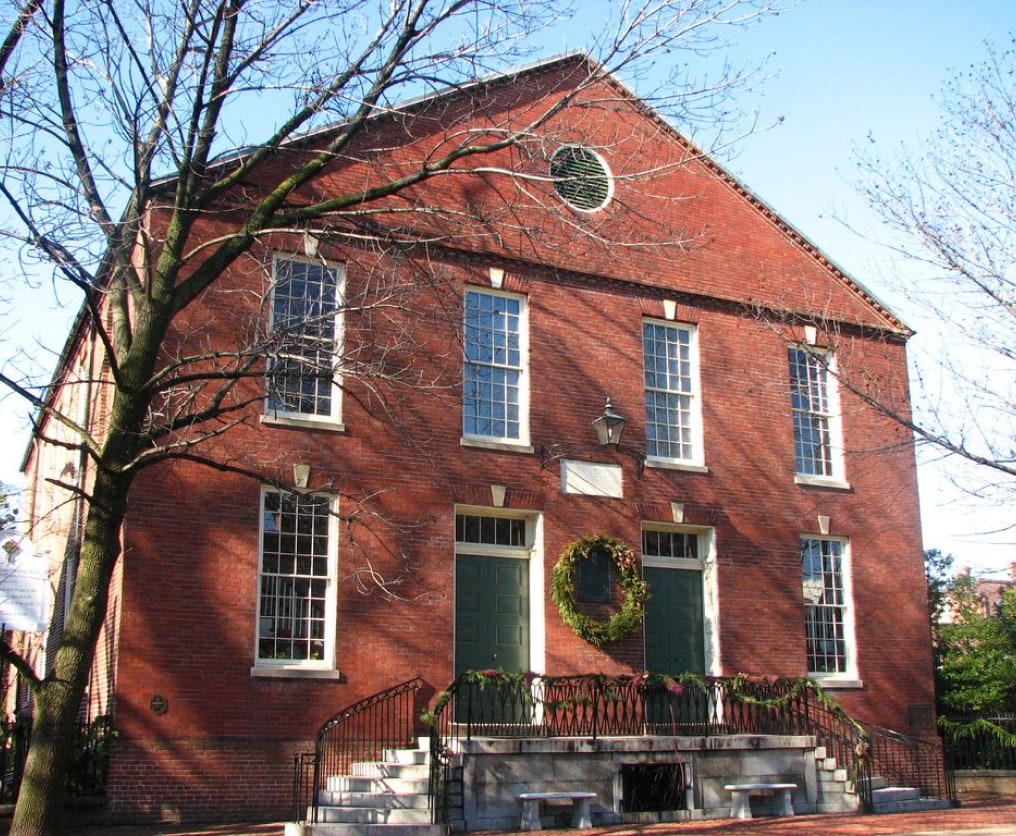
Meeting House
The original Meeting House, erected in 1775, was largely destroyed by fire in 1835. The rebuilt structure that survives to this day represents a remarkably pure embodiment of what is sometimes referred to as "plain style architecture," which is frequently described as unadorned, modest, functional, and quietly reverential. In the mid 1920s, Second Presbyterian Church led a major restoration of the old Meeting House. In 1949, the Meeting House congregation was reborn and remains an active congregation today.
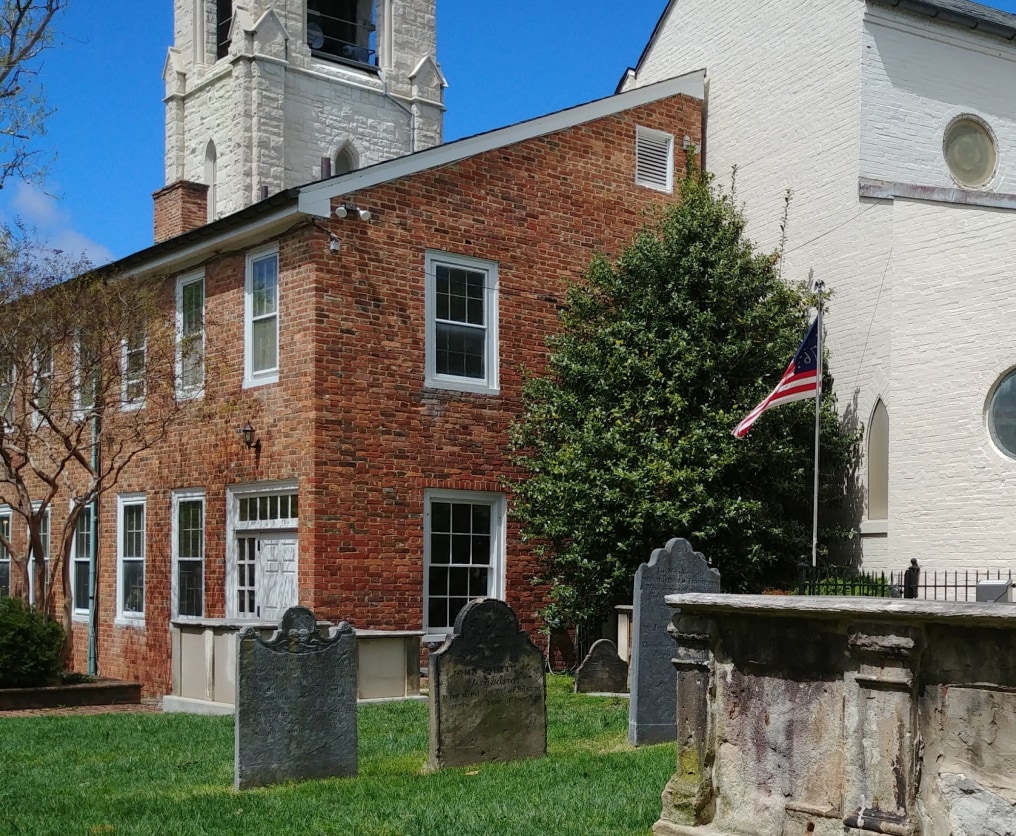
Flounder House
Erected in 1787 to serve as a manse (minister’s residence), and is believed to be Alexandria’s earliest structure to be constructed in this unusual ‘flounder’ architectural style. Flounder-style structures are characterized by a windowless side wall located immediately adjacent to the property line and a half-gable roof; the resulting "one-sided" structure resembles the "one-sided" flounder fish, hence the name. The building was repaired and renovated in 1952 to provide space for administrative offices, meeting rooms, library, and a kitchen. It now houses the Alexandria Tutoring Consortium, hosts AA meetings, and houses the church's historical archives.
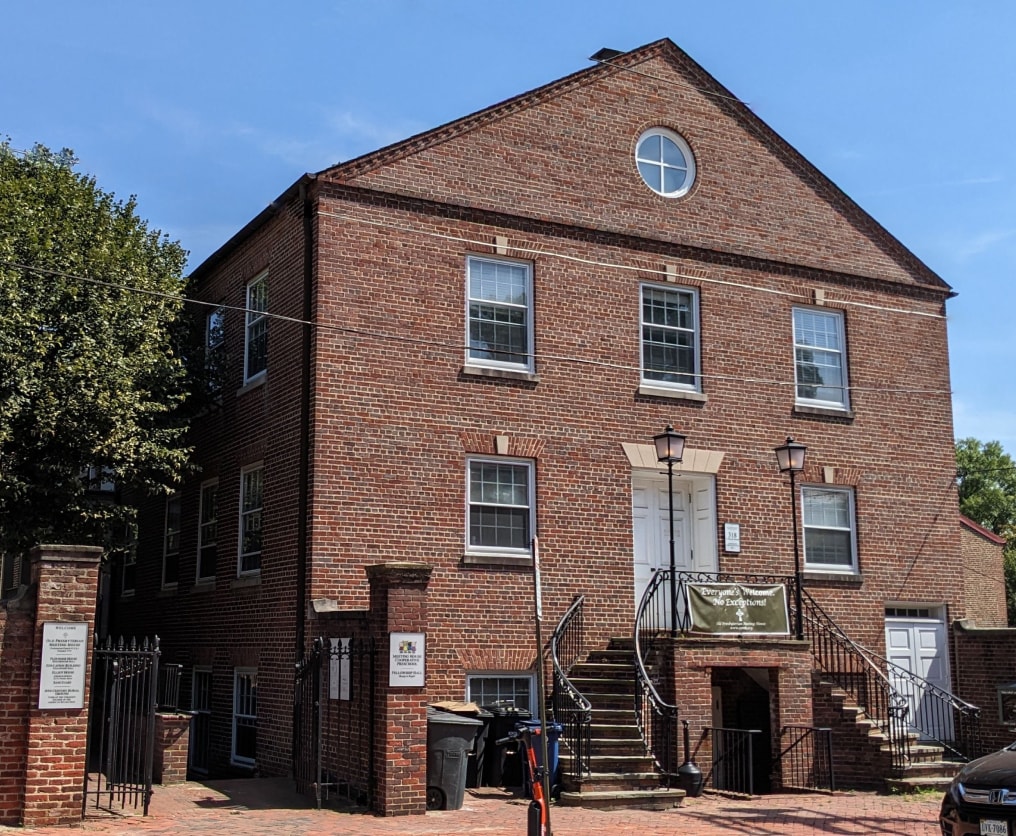
Education Building
The Education Building, constructed in 1957, was the first new structure erected by the congregation in over 120 years. The building is filled on Sundays with classes and child care. During the week, it is filled with eighty children plus teachers from the Meeting House Cooperative Preschool, the successor to the kindergarten and pre-school programs that have been operated at the Meeting House since 1954.
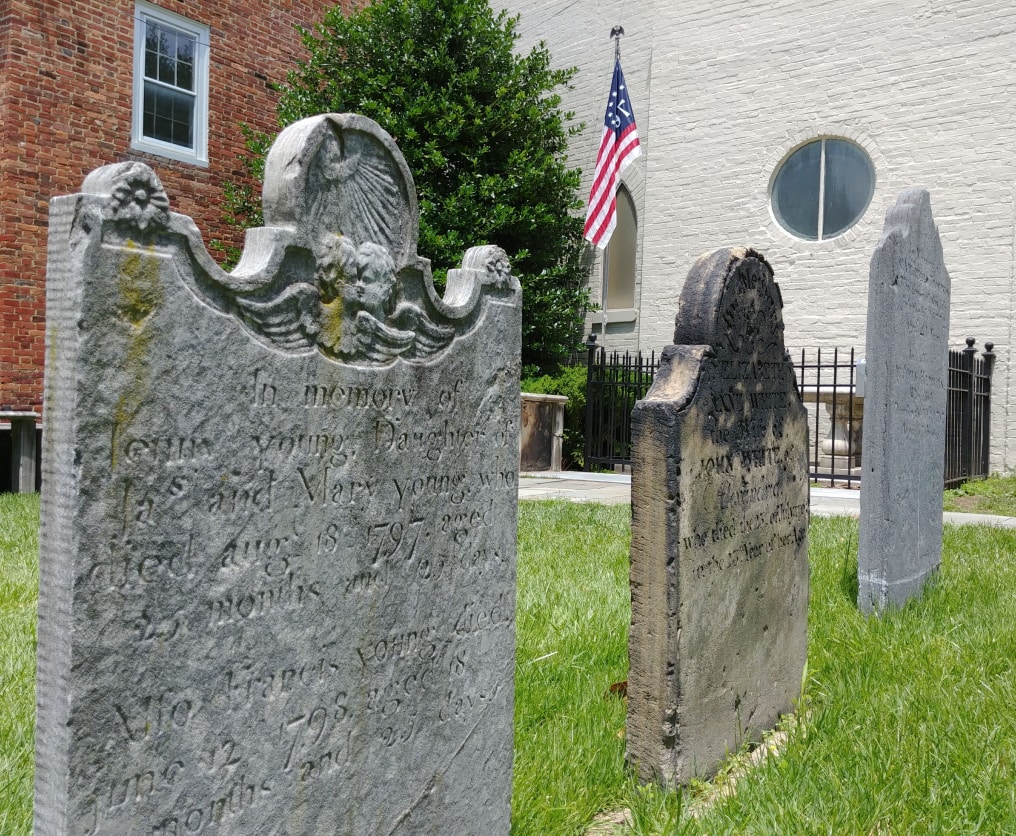
Burial Ground
The churchyard burial ground, located to the north and west of the Meeting House, served as the final resting place for the remains of Alexandria’s Presbyterians from the town’s earliest days through 1809. Among those buried here are men and women from the families that founded the town of Alexandria. Forty-three Revolutionary War Patriots are buried in the burial ground and Presbyterian Cemetery, combined the largest number of such interments in the Commonwealth of Virginia. Over 300 persons are believed interred in the burial ground, but only about 40 gravestones are present today.
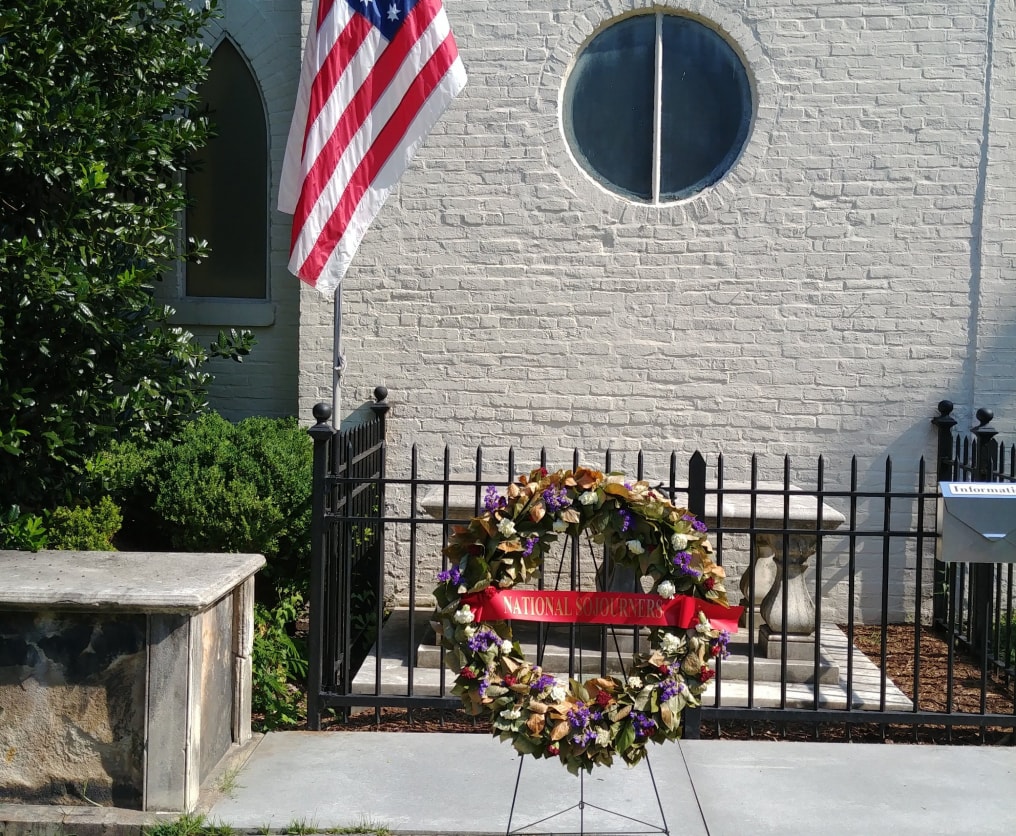
Tomb of an Unknown Soldier of the American Revolution
This tomb honors an unidentified soldier whose remains were unearthed and reburied at this site in 1826. It honors as well the many other patriots who died helping secure Independence for the United States of America, and especially those who now rest in unmarked graves. The tomb is regularly honored with services conducted by the National Society of the Children of the American Revolution, Daughters of the American Revolution, Sons of the American Revolution, Society of the Cincinnati, American Legion, Veterans of Foreign Wars, and others.
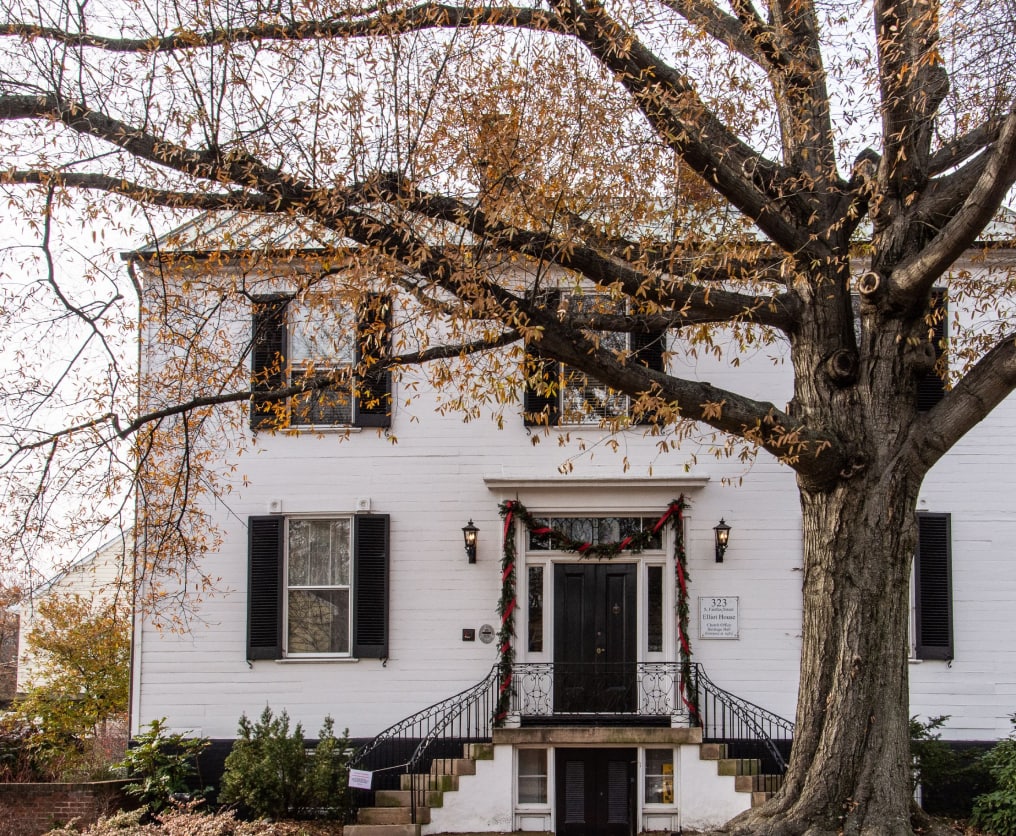
Elliot House
In the early 1840s, this lot was purchased by the Charles B. and Susan Unruh family, who erected as their residence a wooden free-standing two-story structure in the Greek Revival style. That structure continues as the front portion of today’s Elliot House. Sherrie and Jean Robertson Elliot donated the house to the church in 1999. The church restored and expanded it for use as administrative offices and meeting rooms, winning an Award of Merit for "outstanding achievements in historic resources" from the American Institute for Architects in 2006.
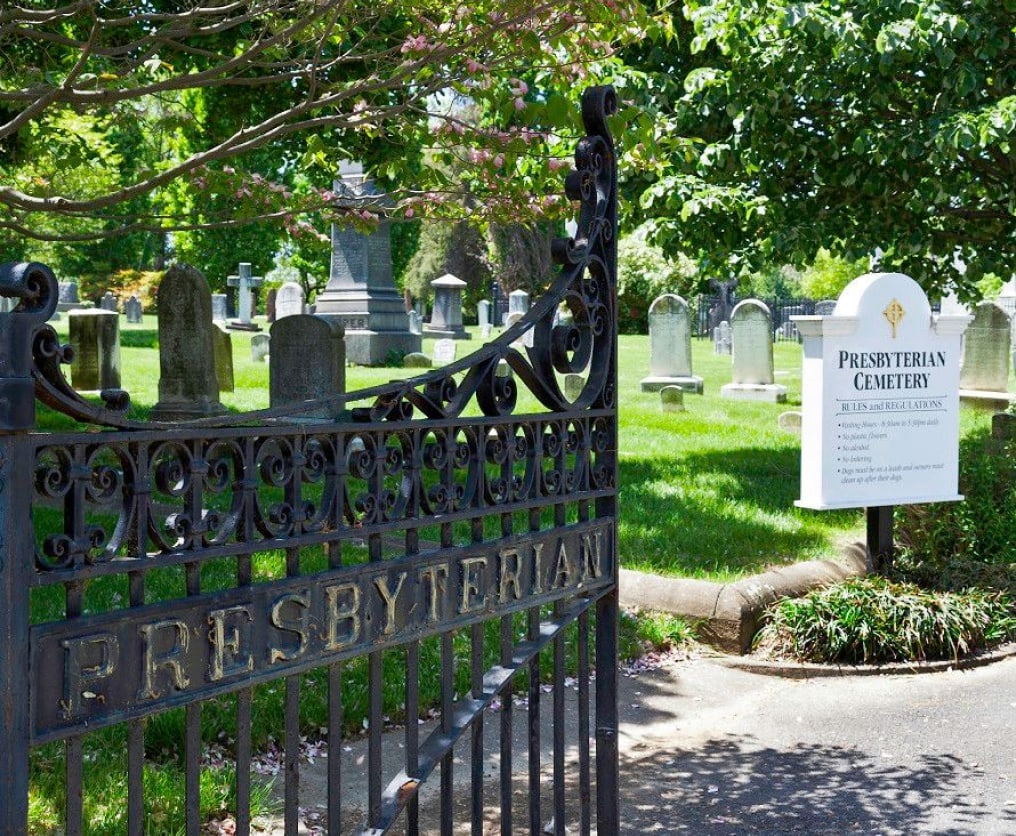
Presbyterian Cemetery
This active seven-acre burial ground, located a mile west of the Meeting House, was established by the congregation in 1809, in response to the 1804 Alexandria ordinance forbidding further burials within the town limits. When founded, the cemetery was located in open countryside, just across the boundary line between the Commonwealth of Virginia and the District of Columbia, of which Alexandria was then a part. The rear portion neighbors the Alexandria National Cemetery, created as one of the initial national cemeteries in July 1862.
Other related properties
We're Glad You're Here
Next Worship Services: Sunday 8:30 AM or 11:00 AM
